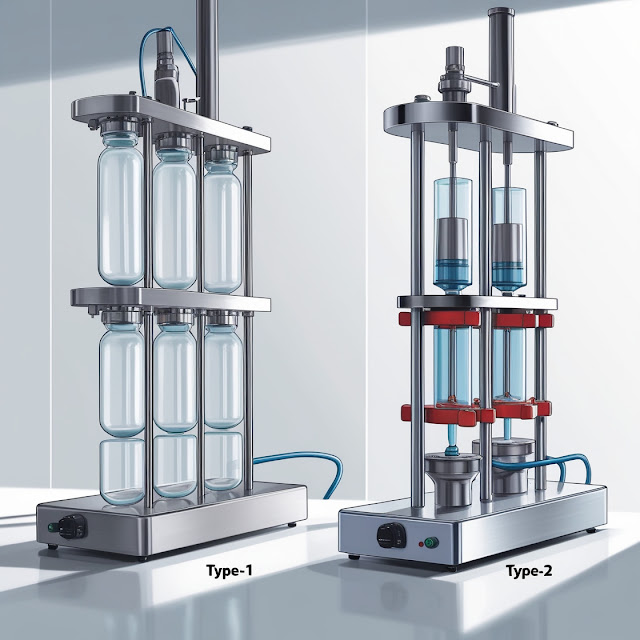Dissolution testing is a key method in pharmaceutical development, used to evaluate how quickly a drug dissolves in a liquid medium, which simulates conditions in the body. Two common types of apparatus for dissolution testing are Type 1 (Basket Apparatus) and Type 2 (Paddle Apparatus). Here's a breakdown of both:
1. Type 1: Basket Apparatus
- Design: This apparatus consists of a cylindrical basket made of stainless steel mesh attached to the end of a metal shaft. The basket holds the drug dosage form (tablet, capsule, etc.) and is immersed in a vessel containing the dissolution medium.
- Function: The basket rotates at a specified speed, usually between 50 to 100 rpm, which helps the dosage form dissolve in the medium.
- Usage: The basket apparatus is typically used for dosage forms that tend to float, such as capsules or low-density tablets. It ensures uniform exposure of the dosage form to the medium.
- Standardization: It operates under conditions specified by the United States Pharmacopeia (USP).
2. Type 2: Paddle Apparatus
- Design: The paddle apparatus consists of a flat-bladed paddle attached to a vertical shaft. The dosage form is placed at the bottom of the dissolution vessel (usually a glass beaker) filled with the dissolution medium.
- Function: The paddle rotates at a predetermined speed (usually 25 to 100 rpm), agitating the medium and allowing the dosage form to dissolve gradually.
- Usage: The paddle apparatus is more commonly used for immediate-release solid oral dosage forms like tablets, which tend to sink to the bottom.
- Standardization: Like the basket apparatus, the paddle apparatus is also standardized according to USP requirements.
Both apparatus types are designed to provide reproducible conditions for evaluating the dissolution characteristics of a drug, allowing pharmaceutical companies to ensure that drugs meet quality standards and regulatory requirements.









0 Comments
Thanks for your feedback, i'll get back to you soon